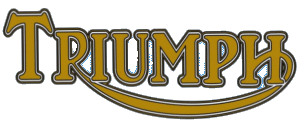1970 Triumph Triple 'High Boy'
Estimate: (£) 32,000 - 36,000
Reg Number: N/A
Frame Number: Not Visible
Engine Number: T150T139
Body Colour: Blue
Cc: 750
MOT ExpiryDate:
The howl of a BSA or Triumph triple in competition is as familiar to classic enthusiasts today as it was to racing enthusiasts at the beginning of the seventies, however, our familiarity with the machines may occasionally cause us to forget why they are so popular. Born out of expediency as a result of the emerging threat from Japan both on the road and the track they went on to secure a place in history based on success.
The original concept for a triple based on one-and-a-half Speed Twins was originally mooted at the beginning of the sixties, although the go ahead for work to commence did not finally occur until 1964. The viability of the concept was validated when the new model was announced in September 1968 to excellent reviews. With the road going models in production, work commenced at the end of 1969 on a racing version to compete at Daytona in March 1970. Whilst Doug Hele oversaw the engine preparation Rob North designed a specially commissioned frame to house the unit, the marriage of the two proving to be a success from the outset. Gene Romero set a lap record during practice of 164.44 mph. During the race Mike Hailwood's machine overheated, but Romero and Don Castro were able to secure second and third places. Successes followed on both sides of the Atlantic with the new machines securing victories including the Production TT and the Bol d'Or. The team returned to Daytona for 1971 (the bikes now equipped with Lockheed discs all round and a revised frame that reduced the machines' overall height) and populated all three steps on the podium thanks to Dick Mann, Romero and Emde. This commenced another year of success for the triples including John Cooper's famous victory at the Mallory Park Race of the Year when he headed a field home that included Agostini on the MV triple,...
Courtesy H & H
Triumph Motorcycles of the 1970s

